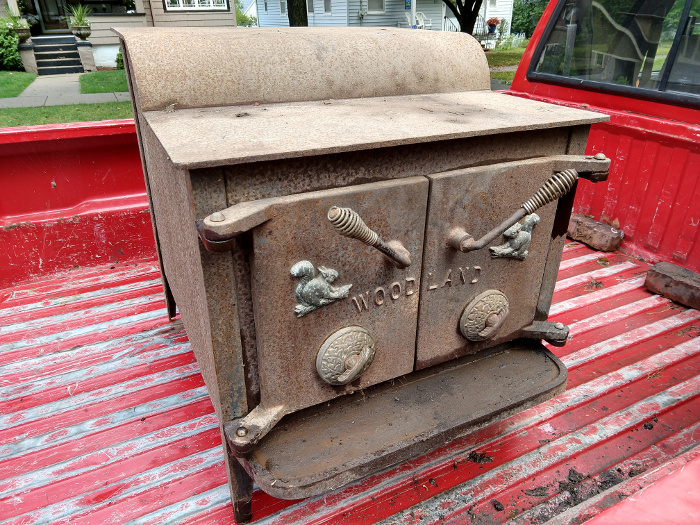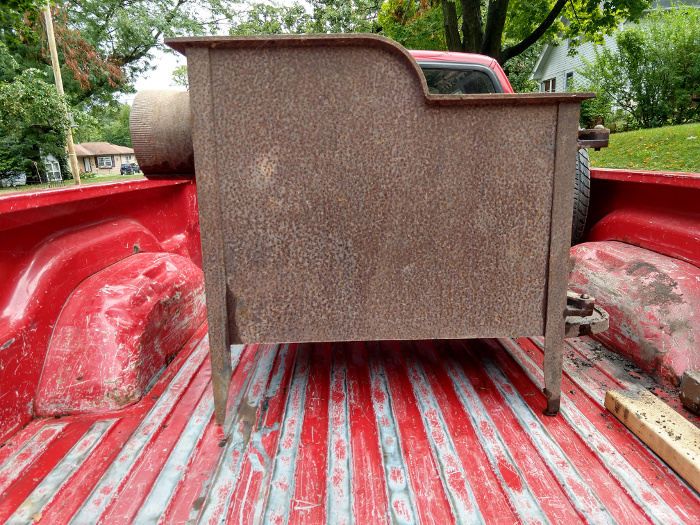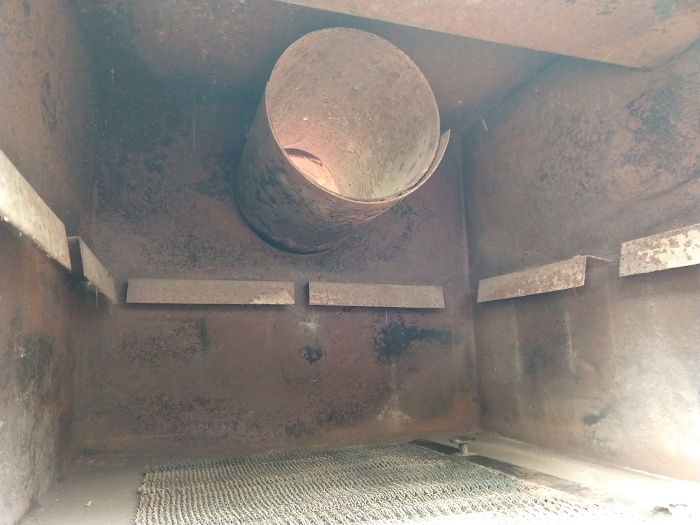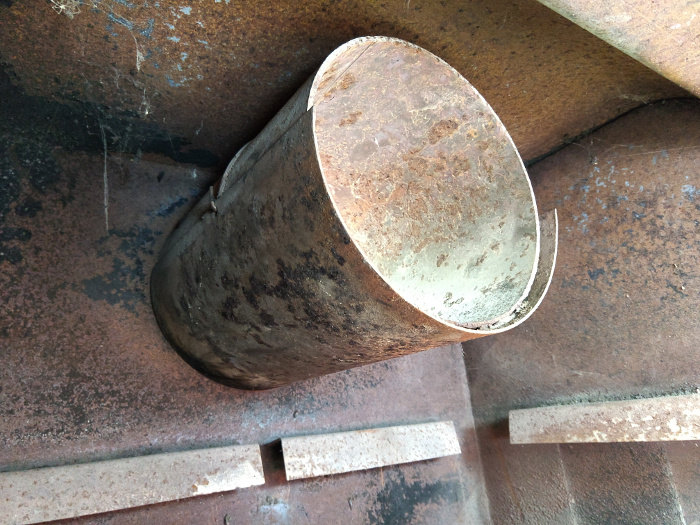Hey all
I recognize that this is the Fisher stove section but when I have searched for 'making a baffle' it always leads me here because Coaly seems to be the expert on this topic and he's also a Fisher mod etc.
I recently purchased a Woodland F20 rear vent that had been sitting idle for many years, but it (amazingly) came intact with all the bricks and the front screen. Knowing that these old stoves don't have baffles I returned to the baffle thread and began figuring out how to add a baffle to this stove. The problem is that this morning while I was cleaning it out I went to see if there was a shelf at the back just below the vent and to my surprise the vent extends into the box 11". And further, there's a piece of sheet metal (like a saddle) on the bottom half of the vent that has a wire over the top holding it in place.
I'm not sure what the 'saddle' contributes but it projects barely 1/2" further forward than the vent itself, so why it's there I do not know. And further, this complicates the baffle design because the vent extends into the box so far. Is that 'saddle' supposed to be a baffle?
I will add pics of the mess so you all can see what I'm talking about. And if this content isn't allowed in the Fisher section please accept my apology. I only started here because of the topic and because the Woodlands are Fisher 'copies'.
Thanks
Steve A
edit: add pics




I recognize that this is the Fisher stove section but when I have searched for 'making a baffle' it always leads me here because Coaly seems to be the expert on this topic and he's also a Fisher mod etc.
I recently purchased a Woodland F20 rear vent that had been sitting idle for many years, but it (amazingly) came intact with all the bricks and the front screen. Knowing that these old stoves don't have baffles I returned to the baffle thread and began figuring out how to add a baffle to this stove. The problem is that this morning while I was cleaning it out I went to see if there was a shelf at the back just below the vent and to my surprise the vent extends into the box 11". And further, there's a piece of sheet metal (like a saddle) on the bottom half of the vent that has a wire over the top holding it in place.
I'm not sure what the 'saddle' contributes but it projects barely 1/2" further forward than the vent itself, so why it's there I do not know. And further, this complicates the baffle design because the vent extends into the box so far. Is that 'saddle' supposed to be a baffle?
I will add pics of the mess so you all can see what I'm talking about. And if this content isn't allowed in the Fisher section please accept my apology. I only started here because of the topic and because the Woodlands are Fisher 'copies'.
Thanks
Steve A
edit: add pics




Last edited:

